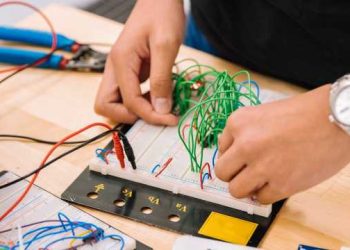E-learning has been a game changer in the education industry. With the use of technology, students can now access lectures, assignments, and various educational materials from anywhere globally. This has enabled flexibility in learners’ schedules, creating an opportunity for self-paced learning at their own convenience, and from the comfort of their homes. There are a few ways that e-learning has revolutionized education over the past few decades, and these changes are only likely to grow in the coming years.
First, e-learning has cut the costs of education. With e-learning, there is no need to maintain physical classrooms, and teachers can work from anywhere in the world. This has allowed schools to reduce the cost of tuition fees and still offer quality education. Additionally, students can access learning materials online for free, which allows them to save their money that they would have spent on textbooks.
Secondly, e-learning has made education more accessible. Students from disadvantaged backgrounds and rural areas can now access quality education without undergoing the inconvenience of travelling long distances. Furthermore, individuals who are unable to enrol in schools due to physical disabilities can access education on their terms through e-learning platforms.
Thirdly, the use of technology has made education more engaging and interactive. E-learning platforms use multimedia content to present course material, which was not possible with traditional classroom learning. This has made the learning process more interesting and informative for students. Studies have shown that learners retain more information when they are engaged and enthusiastic about the subject matter.
Fourthly, e-learning has personalized the learning experience. Teachers can now create tailor-made content that suits individual students’ needs and learning styles. This personalized approach to learning has resulted in improved student performance, as they can focus on their strengths while improving in their areas of weaknesses.
Lastly, e-learning has allowed for more innovative teaching methods. Teachers can now use various technologies such as interactive whiteboards, online presentation tools, and social media to create a dynamic and collaborative learning environment. These innovative teaching methods attract students’ attention and make learning much more fun and interactive.
In conclusion, e-learning is here to stay and will continue to change the face of education in the coming years. It has cut costs, made learning more accessible, personalized, interactive, and engaging. Teachers who implement e-learning approaches are better placed to address the various learning challenges that students face. While there are some concerns about the quality of education provided through e-learning platforms, it is apparent that the benefits of e-learning outweigh the drawbacks. As we embrace the changing education landscape, teachers, students, and industry stakeholders must work together to ensure that e-learning platforms meet the needs of the modern, tech-savvy student.













